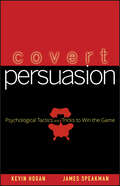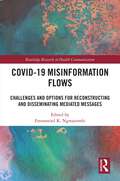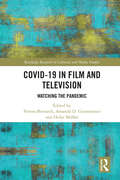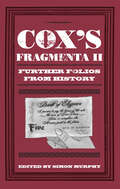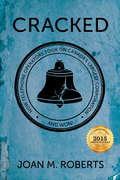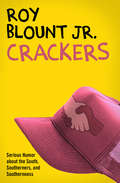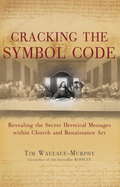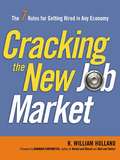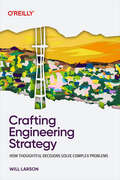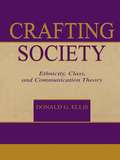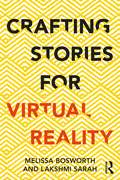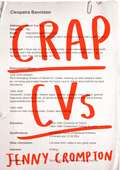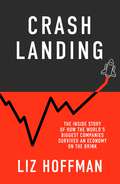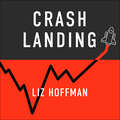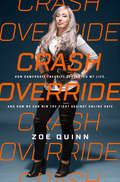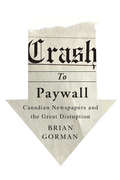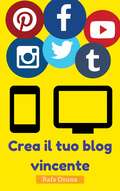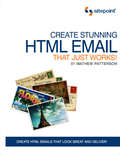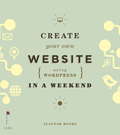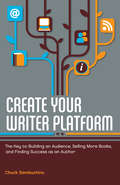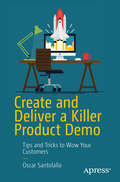- Table View
- List View
Covering the Environment: How Journalists Work the Green Beat
by Bob WyssThis practical primer explains the primary issues in writing about the environment, identifies who to go to and where to find sources, and offers examples of writing and reporting the beat. Observations and story excerpts from experienced journalists provide real-world context both for those in the U.S. as well as internationally. Practice story assignments, resources, and a glossary of critical terms gives budding journalists all the tools needed to cover the green beat. Updated with detailed coverage of how companies and climate change have evolved over the past decade, this second edition expands upon the digital sphere and the myriad ways that deadline, multimedia and mobile reporting have changed environmental journalism. Including consideration of issues such as the water crisis in Flint, Michigan, and the GMO controversy, this new edition provides a fresh take on the green beat with a newly organized table of contents and a guide to freelance and entrepreneurial journalism anywhere in the world. Contents include: • an overview and history of the environment and journalism, spotlighting the most significant issues in the beat; • guidance on understanding environmental and health science, ranging from issues of risk, to scientific research and studies, to interviewing scientists; • insights into government and regulatory communities and environmental advocates on all sides of the political spectrum and internationally; • assistance in accessing public records and conducting digital and computer-assisted reporting; • guidance in writing the story for print, broadcast and internet audiences; • an examination of the future of journalism and news coverage of the environment in the U.S. and throughout the world.
Covert Persuasion: Psychological Tactics and Tricks to Win the Game
by Kevin Hogan James SpeakmanDiscover effective techniques to convince people of virtually anything with the help of psychology, linguistics, sales tactics & communication.&“This book is a treasure trove of ideas you can use to turn a &‘no&’ into a &‘yes&’ almost instantly-in any sales situation.&” —Brian Tracy, speaker and author of Create Your Own Future and Change Your Thinking, Change Your Life When we make decisions we like to think we weight the options carefully, look at all the possibilities, and make the best choice based on a rational examination of the facts. But in truth, much of our decision making happens on a subconscious level based on feelings we might not even be aware of. Understanding and managing those subconscious feelings is the key part to persuasion. By observing and predicting human behavior, we can learn to react and direct behavior in others with the right kinds of words and body language. If you want to learn how to convince people to buy your product, contribute to your cause, or vote for your candidate, this book has the answers. Covert Persuasion synthesizes the latest research in psychology, linguistics, sales tactics, human communication to reveal the most effective methods for consistently and effectively persuading anyone of virtually anything. Covert Persuasion sounds like a secret operation because it is; when you master these techniques you can use every day to dramatically increase your commissions. And if you don&’t work in sales, you can still use these tactics to convince colleagues, subordinates, and supervisors to help you meet your goals and get things done daily. Even outside the office, persuasion is a vital skill everyone should have. This reliable resource will help you with all your persuasion efforts, in every situation. Dip into it for fresh ideas and new techniques or use it to sharpen the skills you already have. For salespeople, Covert Persuasion will help you increase your sales almost immediately. No matter what you do for a living, this book will help you do it better. Not convinced yet? Look inside and you will be . . . &“Hogan is the master of persuasion. I urge you to persuade yourself to buy this book and everything he&’s ever written and recorded. It will help you understand yourself, understand others, and succeed. This information is bankable.&” —Jeffrey Gitomer, author of The Sales Bible, Little Red Book of Selling, and Little Red Book of Sales Answers
Covid-19 Misinformation Flows: Challenges and Options for Reconstructing and Disseminating Mediated Messages (Routledge Research in Health Communication)
by Emmanuel K. NgwainmbiCovid-19 Misinformation Flows describes challenges in accessing, collecting, processing, and disseminating information on pandemics, with a focus on Covid-19 communication.An international team of authors addresses the role of disinformation and misinformation in managing the communication of epidemics; how social media platforms and mainstream media outlets in some countries and regions address pandemics in the context of the flow, learning, and sharing of information on Covid-19. Looking at how traditional media and social media report pandemics, especially Covid-19, the volume addresses the effect of fake news on individuals and businesses, and the impact of such communication on physical and mental health.This book will interest scholars and students of health communication, social media communication, journalism, political communication, and media and communication in the Global South.
Covid-19 in Film and Television: Watching the Pandemic (Routledge Research in Cultural and Media Studies)
by Verena Bernardi Amanda D. Giammanco Heike MißlerThis collection explores the impact of Covid-19 on the production and consumption of television and film content in the English-speaking world. Offering in-depth analysis of select on-screen entertainment, the volume addresses entertainment’s changing role during and following the Covid-19 pandemic. It also studies the pandemic’s incorporation into the narrative of numerous series, films, and other televised formats, capturing the moments and contexts in which these developments emerged. Chapters examine the pandemic’s impact both on a micro- and macro level, focusing on the content as well as form of TV shows and films. Bringing together an international team of scholars, the book offers a range of perspectives, exploring phenomena such as the ‘YouTubification’ of audience-reliant late-night television, as well as films and TV shows such as Superstore, Grey’s Anatomy, and The Good Fight.Given the pandemic’s lasting impact on the film and television industries, this book will be a valuable read for scholars studying audience and viewer reception of on-screen content, and the impact of crises on cultural industries. It will also appeal to researchers in cultural studies, popular culture studies, television studies, internet studies, film studies, and media studies more broadly.
Cox's Fragmenta II: Further Folios from History
by Simon MurphyA presumptuous bear imposing on a coachful of ladies, how to behave in the British Museum, the dangers of dallying with a black-eyed girl and the Royal Navy’s inaugural biscuit machine are just some of the masterpieces of understated journalism collected by Francis Cox and contained in his Fragmenta. At ninety-four volumes, Cox’s scrapbook has to be one of the largest collections of journalistic ephemera ever. For sixty years during the late eighteenth and early nineteenth centuries he accumulated articles on everything from duels to playhouses, and foreign travel to warfare. Following on from the success of the first volume, Simon Murphy has selected more bizarre stories to create another delightful historical miscellany which will intrigue and amuse.
Cracked: How Telephone Operators Took on Canada’s Largest Corporation ... And Won
by Joan M. Roberts2015 Ontario Historical Society Alison Prentice Award — Winner 2016 Heritage Toronto Book Award — Nominated The story of the Bell Canada union drive and the phone operator strike that brought sweeping reform to women’s workplace rights. In the 1970s, Bell Canada was Canada’s largest corporation. It employed thousands of people, including a large number of women who worked as operators and endured very poor pay and working conditions. Joan Roberts, a former operator, tells the story of how she and a group of dedicated labour organizers helped to initiate a campaign to unionize Bell Canada’s operators. From the point of view of the workers and the organizers, Roberts tells an important story in Canada’s labour history. The unionization of Bell Canada’s operators was a huge victory for Canada’s working women. The victory at Bell established new standards for women in other so-called “pink-collar” jobs.
Crackers
by Roy Blount Jr.An indispensible guide to southernness from revered humorist and unapologetic curmudgeon Roy Blount Jr.When a simple-talking, peanut-warehousing, grit-eating Southern Baptist Cracker got himself nominated for president of the United States in 1976, it set Roy Blount Jr. to thinking—about the South, about southerners, and about southernness. The result is a collection of savagely funny and insightful takes on redneck heaven, whiskey, blood, possums, and a great number of other things.Blount turns his gimlet eye on his Dixie home, and in the process, he clears up long-held misconceptions (and creates new ones) about the people who reside below the Mason-Dixon line. Crackers delivers classic Blount, whether you are a proud southerner or a clueless Yankee.
Cracking The Symbol Code
by Tim Wallace-MurphyA heretic in medieval times was anyone who dissented from the established Church's view, and to be branded a heretic invited torture and execution. This title presents an alternative Christian story told by those who were outlawed by the orthodox Church, and includes secret codes and symbolism.
Cracking the New Job Market: The 7 Rules for Getting Hired in Any Economy
by R. William HollandForget everything you think you know about landing a well-paid jobùthe rules have changed forever.The rules for finding professional work once seemed clear and unwavering: capture career highlights in a resume, practice answers to standard interview questions, and do lots of face-to-face networking. Cracking the New Job Market shows how these rules have changed and delivers new job-hunting strategies that actually work. The key, rather than to emphasize past accomplishments, is to sell your self on the value you can create for an employer. This new approach to getting hired requires new skills. Author R. William Holland, a human resources insider, shows job seekers how to: ò Gather information on what a prospective employer finds important ò Emphasize those skills, accomplishments, and qualities in tailored resumes and interview answers ò Identify the intersection between personal talents and what the marketplace needs ò Unlock the networking power of social media ò Negotiate the best possible offer Enlightening and practical, this myth-busting book delivers seven powerful rules for landing a great jobùeven in a difficult economy.
Crafting Engineering Strategy: How Thoughtful Decisions Solve Complex Problems
by Will LarsonMany engineers assume their organization doesn't have an engineering strategy—when in fact, they often do. It just may not be working. In Crafting Engineering Strategy, Will Larson (author of An Elegant Puzzle, Staff Engineer, and The Engineering Executive's Primer) offers a practical, example-rich guide to navigating technical and organizational complexity through structured, intentional strategy. Written for senior engineers, engineering leaders, architects, and curious collaborators, this book lays out a repeatable process for building effective, actionable strategies—from early diagnosis to rollout. With lessons drawn from real-world case studies at companies like Stripe, Uber, and Calm, Larson provides a framework for shaping critical decisions around system migrations, API deprecations, platform investments, and more. Along the way, you'll learn to augment technical planning with communication, governance, and systems thinking. Whether you're shaping your team's direction or leading a company-wide initiative, Crafting Engineering Strategy will help you make thoughtful decisions that stick. Build durable engineering strategies from first principles Apply methods like Wardley mapping and systems modeling Lead strategy as a staff+ engineer or executive Learn from detailed case studies across industries Improve your strategic fluency and influence over time
Crafting Great APIs with Domain-Driven Design: Collaborative Craftsmanship of Asynchronous and Synchronous APIs
by Annegret Junker Fabrizio LazzarettiCrafting, testing, and maintaining events and synchronous APIs represent one of the most challenging tasks in modern software applications. This comprehensive guide delves deeply into the intricacies of managing asynchronous and synchronous APIs using a consistent design approach. The uniqueness of this book lies in its emphasis on collaborative API design between IT and business experts, facilitated by Domain-Driven Design (DDD). It provides clear guidance on selecting the appropriate communication strategy for different scenarios, ensuring that APIs meet the evolving needs of both developers and end-users. Readers will gain valuable insights into using popular definition languages such as OpenAPI and AsyncAPI. This book offers a case study that demonstrates how the described methodologies can be applied to modernize legacy systems, ensuring compatibility with development practices. By the end of this book readers, will be equipped to design APIs that are not only technically sound but also intuitive, reliable, and adaptable to the dynamic needs of modern applications. You Will: Learn how to choose the most appropriate communication strategy for different scenarios, considering factors such as scalability, reliability, and compatibility with modern development practices. Explore the practical application of popular definition languages like OpenAPI and AsyncAPI to create robust APIs Learn how to facilitate collaborative API design between IT and business experts using Domain-Driven Design (DDD), ensuring that APIs align with both technical requirements and business objectives. This book is for: Software architects, business analysts, developers and IT professionals
Crafting Society: Ethnicity, Class, and Communication Theory (Routledge Communication Series)
by Donald G. EllisThe study of communication, language, and discourse is at once simple, elegant, and complex. Each of these areas is informed by "micro" subjective experiences of individuals and the "macro" processes of a culture. Communication itself is thoroughly modern yet it seeks anchorage in the traditions of the humanities and social sciences. All of this creates a significant challenge. In this monograph, Ellis considers the study of communication as he discusses three key issues in communication theory: (1) the growing emphasis on meaning, (2) the importance of a mediated culture, and (3) the links between micro communication activities and macro social categories such as ethnicity and social class. In response to these three issues, this book deals with the way people use language and communication to construct their world; this world is not constructed purely but is influenced by attitudes, ideologies, and biases. In the modern world the medium of communication has an impact on consciousness and society, and Ellis shows how the media are responsible for some of the fault lines in society. The book also explores principles of medium theory and documents the impact of media on psychological and sociological phenomena. Finally, work of Goffman, Giddens, and Randall Collins is extended to show how micro communication behaviors are implicated in and by social conditions. ADDITIONAL COPY FOR MAILER Expanded features: * The chapters work out a logic connecting real communication patterns with the broad principles upon which societies are explored. Thus the title "Crafting" Society--the crafting is purposefully active to indicate the dynamic processes involved in creating what we call society. Society and culture have their roots and empirical bases in communication; that is, in the daily struggles of interaction. * Two chapters on two of the most important and controversial issues of the day--ethnicity and class. These two chapters are clear illustrations of the new theoretical principles discussed throughout the book. * A chapter on social class is very unique for a book devoted to communication processes. Communication theorists do not usually write about class, even though it is a highly symbolic process and rooted in communication patterns. Class is a difficult concept in America since so few people, other than sociologists, care to talk about it. * A chapter on medium theory takes the bold step of experimenting a little by summarizing basic causal statements and propositions. This device underscores the goal of a theory which is to come to grips with testable statements. The focus is on medium theory and how the media influence consciousness and social structure. * A unique chapter takes up the issue of how communication processes are constitutive of social structures. It draws on work by Giddens and others to return to a concept of structure based on actions that produce and reproduce structure.
Crafting Stories for Virtual Reality
by Melissa Bosworth Lakshmi SarahWe are witnessing a revolution in storytelling. Publications all over the world are increasingly using immersive storytelling—virtual reality, augmented reality and mixed reality—to tell compelling stories. The aim of this book is to distill the lessons learned thus far into a useful guide for reporters, filmmakers and writers interested in telling stories in this emerging medium. Examining ground-breaking work across industries, this text explains, in practical terms, how storytellers can create their own powerful immersive experiences as new media and platforms emerge.
Crap CVs
by Jenny CromptonA HILARIOUS COMPILATION OF THE WORST JOB APPLICATIONS IMAGINABLE - A PERFECT STOCKING FILLER OR OFFICE SECRET SANTA GIFT THIS CHRISTMAS. Ever read a truly terrible job application? Or perhaps slightly exaggerated the truth on one of your own...We've all been there - but these are worse. So much worse. From overly-honest cover letters, embarrassing typos, and mortifying personal revelations, to awkward interview questions, misplaced self-confidence, and, of course, outright lies. This hilarious collection of shockingly dreadful job applications, crap CVs and excruciating interviews will have you laughing out loud, while also making you feel so much better about yourself - because at least you weren't ever this bad . . .Application for EmploymentI refer to the recent death of the Technical Manager at your company and hereby apply for the replacement of the deceased manager.Each time I apply for a job, I get a reply that there is no vacancy but in this case I have caught you red-handed and you have no excuse because I even attended the funeral to be sure that he was truly dead and buried before applying.Attached to my letter is a copy of my CV and his death certificate.The Interview:Q. Is there anything about this job that you feel you might not be very good at?A. Dealing with people.Q. What person, living or dead, would you most like to meet?A. The living one.
Crash Landing: The Inside Story Of How The World's Biggest Companies Survived An Economy On The Brink
by Liz HoffmanIt was the ultimate test for CEOs, and almost none of them saw it coming.__________In early March 2020, with the Dow Jones flirting with 30,000, the world's biggest companies were riding an eleven-year economic high. By the end of the month, millions would be out of work, iconic firms were begging for bailouts, and countless small businesses were in freefall. Slick consulting teams and country-club connections were suddenly of little use: business leaders were fumbling in the dark, tossing out long-term strategy and making decisions on the fly-decisions, they hoped, that might just save them.In Crash Landing, award-winning business journalist Liz Hoffman shows how the pandemic set the economy on fire-but if you look closely, the tinder was already there.Based on astonishing access inside some of the world's biggest and most iconic companies, this is a gripping account of the most remarkable period in modern economic history, revealing how they battled against an economic catastrophe for which there was no playbook: among them, AirBnB's Brian Chesky, blindsided by a virus in the middle of a high-stakes effort to go public; American Airlines's Doug Parker, shuttling between K Street and the White House, determined to secure a multi-billion-dollar bailout; and Ford's Jim Hackett, as his assembly lines went from churning out cars to ventilators.Crash Landing reveals the fear, grit, and gambles of the pandemic economy, while probing its implications for the future of work, corporate leadership, and capitalism itself, asking: Will this remarkable time give rise to newfound resilience, or become just anothercostly mistake to be forgotten?__________A gripping account of the financial carnage of the pandemic, revealing the fear, grit, and gambles that drove the economy's winners and losers.
Crash Landing: The Inside Story Of How The World's Biggest Companies Survived An Economy On The Brink
by Liz HoffmanAn exposé of the billionaires who built the US economy on sand, and the virus that saw it crumble.A kaleidoscopic account of the financial carnage of the pandemic, revealing the fear, grit, and gambles that drove the economy's winners and losers-from a leading Wall Street Journal reporter.Crash Landing takes readers behind the scenes of an unprecedented period of global economic turmoil, letting readers into the inner lives of the men and women trying to save big business from the brink.The world's most powerful CEOs never saw it coming, especially after a decade of growth that saw them riding high. Then whispers of a new flu-like illness became a crescendo, and by the end of March 2020 ten million people were out of work, iconic firms were begging for bailouts, and countless small businesses were in freefall.How do you sustain a workforce that can no longer work? How do you ride out a crisis that has no end in sight? How do you prepare for a recovery in a new world? Liz Hoffman pulls back the curtain on the most violent few months in the modern global economy, taking readers inside boardrooms, onto factory floors and into trading pits. Featuring original interviews with the people responsible for the economy, and in charge of making sure it survives. A gripping story of big business and even bigger characters, Crash Landing will appeal to fans of Michael Lewis and Andrew Sorkin. This is an audiobook that gives you the inside scoop, and answers the most important question of today: Will this remarkable time give rise to newfound resilience, or become just another costly mistake to be forgotten?(P) 2022 Hodder & Stoughton Limited
Crash Override: How Gamergate (Nearly) Destroyed My Life, and How We Can Win the Fight Against Online Hate
by Zoe Quinn<P>You've heard the stories about the dark side of the internet--hackers, #gamergate, anonymous mobs attacking an unlucky victim, and revenge porn--but they remain just that: stories. Surely these things would never happen to you. <P>Zoe Quinn used to feel the same way. She is a video game developer whose ex-boyfriend published a crazed blog post cobbled together from private information, half-truths, and outright fictions, along with a rallying cry to the online hordes to go after her. They answered in the form of a so-called movement known as #gamergate--they hacked her accounts; stole nude photos of her; harassed her family, friends, and colleagues; and threatened to rape and murder her. But instead of shrinking into silence as the online mobs wanted her to, she raised her voice and spoke out against this vicious online culture and for making the internet a safer place for everyone. <P>In the years since #gamergate, Quinn has helped thousands of people with her advocacy and online-abuse crisis resource Crash Override Network. From locking down victims' personal accounts to working with tech companies and lawmakers to inform policy, she has firsthand knowledge about every angle of online abuse, what powerful institutions are (and aren't) doing about it, and how we can protect our digital spaces and selves. <P>Crash Override offers an up-close look inside the controversy, threats, and social and cultural battles that started in the far corners of the internet and have since permeated our online lives. Through her story--as target and as activist--Quinn provides a human look at the ways the internet impacts our lives and culture, along with practical advice for keeping yourself and others safe online.
Crash to Paywall
by Brian GormanIn 2014, when Postmedia acquired Quebecor's Sun Media newspaper and online assets, there was a sense that the recent history of newspapers was repeating itself not as comedy or tragedy, but as eulogy. Crash to Paywall shows that while the newspaper business was weakened by decreases in advertising revenues and circulation, much of its problems stem from self-inflicted damage and business practices dating back to the 1970s. Brian Gorman explores the Canadian newspaper industry crisis and the relationship between the news media and the public. He challenges both the popular mantra that a "perfect storm" of unforeseen circumstances blindsided a declining industry and the narrative that readers were abandoning newspapers, causing advertisers to turn away from "dying" media. Gorman argues that observers had been warning for decades that the business was creating its own problems by acquiring ever-larger debt and shareholder obligations while steadily cutting back on journalists' resources. Finally, by providing journalism for free online, newspaper companies devalued their most important resource and impaired their profitable print products. With dozens of interviews conducted with leading Canadian journalists and editors, Crash to Paywall brings to light the many misconceptions, generalizations, omissions, and highly suspect conclusions about the present state of newspapers and their future.
Crash to Paywall: Canadian Newspapers and the Great Disruption
by Brian GormanIn 2014, when Postmedia acquired Quebecor's Sun Media newspaper and online assets, there was a sense that the recent history of newspapers was repeating itself not as comedy or tragedy, but as eulogy. Crash to Paywall shows that while the newspaper business was weakened by decreases in advertising revenues and circulation, much of its problems stem from self-inflicted damage and business practices dating back to the 1970s. Brian Gorman explores the Canadian newspaper industry crisis and the relationship between the news media and the public. He challenges both the popular mantra that a "perfect storm" of unforeseen circumstances blindsided a declining industry and the narrative that readers were abandoning newspapers, causing advertisers to turn away from "dying" media. Gorman argues that observers had been warning for decades that the business was creating its own problems by acquiring ever-larger debt and shareholder obligations while steadily cutting back on journalists' resources. Finally, by providing journalism for free online, newspaper companies devalued their most important resource and impaired their profitable print products. With dozens of interviews conducted with leading Canadian journalists and editors, Crash to Paywall brings to light the many misconceptions, generalizations, omissions, and highly suspect conclusions about the present state of newspapers and their future.
Crea il tuo blog vincente
by Valeria Bragante Rafa OsunaCrea il tuo blog vincente di Rafa Osuna Letture che ti aiuteranno a creare un blog di successo. Stai pensando di cominciare a scrivere in un blog o ne hai già uno e non ti è chiaro cosa fare? In questo caso, questo libro è per te. Cosa troverai in questo libro? O meglio... che ne pensi se comincio a dirti cosa non troverai? In questo libro non troverai filosofia a buon mercato riguardo i blog. Quella che tentano di venderti le persone che non hai mai avuto successo con un blog. In questo libro non troverai un corso tecnico su come iniziare un blog. Oggi le piattaforme di creazione di blog sono così intuitive e facili da usare che non vale la pena perdere tempo leggendo un libro su questo. Se cerchi questo, ti raccomando qualcuno dei tanti tutorials che ci sono in Youtube su questo tema. Cerca in Internet. Non troverai nemmeno formule magiche per diventare milionario in due settimane con il tuo blog. Se qualcuno ti offre una cosa del genere, scappa immediatamente. Quello che troverai in questo libro è un breve riassunto di ciò che ho scritto nel mio blog personale ((El Último Blog) durante gli ultimi dieci anni. 10 anni nei quali non solo ho continuato il mio blog ma ho diretto una rete di blog con più di 50 redattori, ho partecipato a blog collaborativi, ho tenuto conferenze e corsi sui blog, ho partecipato a varie pubblicazioni. Ciò che ho voluto offrirti in questo libro, come riassunto di questi 10 anni di blogging, è una scelta dei 15 articoli che credo riflettano in modo chiaro e conciso tutto ciò di cui hai bisogno per avere successo con il tuo blog. Sono 15 articoli che ho scelto tra più dei 2000 che ho pubblicato in questi anni. Articoli che ho adattato per la pubblicazione in questo libro, in modo che, mantenendo la freschezza di un post, avessero un certo collegamento tra loro. In questo modo, spero di essere riuscito, con alcune letture veloci, tipiche dei post di
Create Stunning HTML Email That Just Works: Create HTML5 Emails That Look Great and Deliver!
by Mathew PattersonCreate Stunning HTML Email That Just Works is a step-by-step guide to creating beautiful HTML emails that consistently work. It begins with an introduction to email covering topics such as: how email design differs from web design; permission based marketing, and the anatomy of an email. What You Will Learn:How to design HTML emails that look greatSimple methods to design & test email newslettersBest practice, permission based email marketing tips & techniquesProven strategies for selling email design services to your clientsThe book shows the reader how to plan, design, and build gorgeous HTML email designs that look great in every email program: Outlook, Gmail, Apple Mail, etc. All-important tasks like legal requirements, testing, spam compliance and known hacks and workarounds are covered.
Create Your Own Website (Using Wordpress) in a Weekend
by Alannah MooreBuilding a website doesn't have to be complicated or expensive. Create Your Own Website Using WordPress in a Weekend demonstrates how anyone can create a website that looks professional, while being entirely tailored to their needs and preferences.Carefully structured step-by-step tutorials cover every stage of the process, so no specialist knowledge is needed. With beautiful website examples and tips throughout for inspiration, every reader will be able to get themselves - or their business - online in just a couple of days.
Create Your Own Website (Using Wordpress) in a Weekend
by Alannah MooreBuilding a website doesn't have to be complicated or expensive. Create Your Own Website Using WordPress in a Weekend demonstrates how anyone can create a website that looks professional, while being entirely tailored to their needs and preferences.Carefully structured step-by-step tutorials cover every stage of the process, so no specialist knowledge is needed. With beautiful website examples and tips throughout for inspiration, every reader will be able to get themselves - or their business - online in just a couple of days.
Create Your Writer Platform: The Key to Building an Audience, Selling More Books, and Finding Success as an A uthor
by Chuck SambuchinoCreating a platform isn't just beneficial--it's essential! In today's world of blogging, websites, Twitter feeds, and Facebook updates, building a writer platform from the ground up can seem a daunting task. Never fear--author and editor Chuck Sambuchino provides expert, practical advice for increasing your visibility, selling more books, and launching a successful career. In Create Your Writer Platform, you'll learn: The definition of a platform--and why you should start building one now. How to harness the 12 Fundamental Principles of Platform. "Old School" and "New School" approaches to platform, from article writing and conference speaking to website development, blog posts, and social media avenues. How to develop a platform for nonfiction, fiction, and memoir. In addition to Chuck's invaluable insights, you'll also find 12 case studies from authors with effective platforms, as well as professional advice from literary agents. If you're serious about building a platform tailored to you and your writing--a platform that's going to help you succeed as a writer--look no further than Create Your Writer Platform.
Create and Deliver a Killer Product Demo: Tips And Tricks To Wow Your Customers
by Oscar SantolallaCreate great product demos and sell more of your product with the strategies and inspiration in this book. Insightful interviews are presented with professionals who are giving killer product demos in several types of businesses today. The strategies taught in this book are based on the analysis of product demos that made history and brought millions to their companies (Apple, Intel, Microsoft, Tesla, and more).Every day thousands of companies give demos to sell their products. In pre-sales for enterprise software a bad demo can make your product look too complex to the point where decision makers won't buy it. In Software-as-a-Service (SaaS) you need to quickly convert signups into active and paying users. At a product launch event you want a perfect demo that is both persuasive and memorable. Remember Steve Jobs?What You'll LearnApply a simple step-by-step method to create effective product demonstrationsKnow the 5 steps to create a wow momentStudy the first exhaustive analysis of product demos that made history: Douglas Engelbart’s Mother of All Demos; Steve Job’s Macintosh, iPod, and iPhone; and many moreAvoid common mistakes and maximize your presence as a technical presenterAlign your demo with your sales process in enterprise software, Software-as-a-Service (SaaS), mobile apps, etc.Be aware of trends in technology for product demosWho This Book Is ForStartup entrepreneurs, sales engineers, executive or sales representatives, and other professionals

